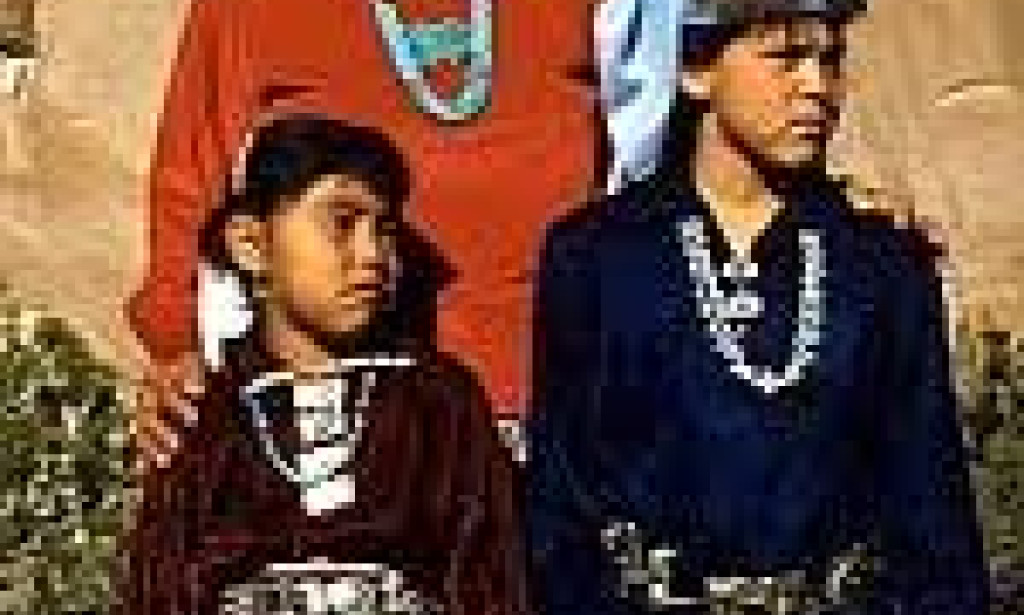In the vast deserts and dramatic landscapes of the American Southwest, where red rock formations stretch toward the sky, lives a people whose roots run deep into the earth the Navajo, or as they call themselves, the Diné, meaning “The People.” With nearly 400,000 members, the Navajo Nation is the largest Native American tribe in the United States, and their story is one of endurance, tradition, and quiet strength.
A Land Defined by Sacred Mountains
To the Navajo, home is more than just land it is sacred. Their traditional homeland, Dinétah, is encircled by four sacred mountains, each marking a cardinal direction and embodying spiritual power. These peaks Sisnaajiní in the east, Tsoodził to the south, Dook’o’osłííd in the west, and Dibé Nitsaa to the north form a spiritual boundary that protects and defines their world.
From the North to the Southwest
Long ago, the ancestors of the Navajo lived in what is now western Canada. Linguistic ties to the Athapaskan language group point to these northern origins. Over time, they journeyed south, arriving in the present-day American Southwest around 1300 CE. There, they adapted to the arid climate, eventually settling across New Mexico, Arizona, Colorado, and Utah.
Living in Harmony with the Earth
The traditional Navajo home, or hogan, is a symbol of harmony with nature. These dome-shaped shelters, made from wooden poles and packed earth, always face east to greet the rising sun ushering in light, warmth, and renewal. Smoke from the central fire escapes through an opening in the roof, connecting earth to sky.
Food, too, is a sacred connection to the land. After settling in the Southwest, the Navajo adopted farming techniques from their Pueblo neighbors, growing corn, squash, melons, and beans. They also became expert herders especially of sheep, which continue to provide not just food but wool for their famed weaving traditions.
A Culture Rooted in Story, Art, and Clan
In Navajo culture, identity is woven through clan and family. Society is matrilineal, with women holding and passing down family resources like livestock and land. Women are also the keepers of art master weavers and potters, whose skills have been passed down for generations.
The Navajo were deeply influenced by neighboring Pueblo tribes, especially the Hopi. While the Hopi used striped patterns, the Navajo introduced striking geometric designs zigzags, diamonds, and powerful lines—into their blankets and rugs, creating textiles of unmatched beauty and precision.
Jewelry, particularly pieces made of silver and turquoise, is another cherished tradition. Taught by Spanish and Mexican silversmiths in the 1800s, the Navajo created adornments that reflected both personal and spiritual significance. And through the sacred art of sand painting used during healing ceremonies images of animals, rainbows, and lightning are painstakingly created from colored sands, only to be destroyed when their purpose is fulfilled.
A Spiritual World Guided by Harmony
To the Navajo, the world is spiritual and interconnected. The number four carries profound meaning: four sacred mountains, four directions, four clans, and four worlds through which they traveled before emerging into this one.
Central to their spiritual life is the Hatałii, or medicine man healer, historian, and ceremonial guide. With more than 50 different ceremonies in Navajo culture, some lasting up to nine days, these sacred rituals bring balance and healing to individuals and the community.
The Tragedy and Strength of the Long Walk
The mid-1800s brought sorrow. After decades of tension with encroaching settlers, the U.S. government launched a campaign against the Navajo. In 1864, more than 10,000 men, women, and children were forced to march up to 450 miles to Bosque Redondo in New Mexico. This brutal journey, known as The Long Walk, became a story of suffering and survival. Held in what was essentially an internment camp, the Navajo endured years of starvation and disease.
But they did not give up.
By 1868, Navajo leaders negotiated their return home. They rebuilt, replanted, and revived their culture in the land of their ancestors.
Navajo Life Today
Today, the Navajo Nation also known as Navajoland stretches across parts of Arizona, Utah, and New Mexico, covering over 27,000 square miles. It is not only the largest reservation in the United States but a symbol of resilience and cultural preservation.
Many Navajo live in modern homes, though the hogan remains a vital part of ceremonial life. The Diné Bizaad the Navajo language is spoken by over 160,000 people, making it the most widely spoken Native American language in the country. During World War II, it became a secret weapon: Navajo Code Talkers used their language to create an unbreakable military code, helping to win the war.
A Nation with Its Own Government
In 1923, the Navajo established their own government to manage oil and resource leases. Today, it has grown into a sophisticated system the largest Native American government run by 88 council delegates representing 110 local chapters. The capital, Window Rock, Arizona, stands as the political and spiritual heart of the nation.
The Navajo Nation sustains itself through a mix of tourism, energy production, and tribal enterprises, using these resources to provide healthcare, education, and community services to its people.
Did You Know?
The Navajo language helped win World War II. The U.S. military used it to develop a secret code that was never broken thanks to the brilliance and bravery of the Navajo Code Text.


good
You must be logged in to post a comment.